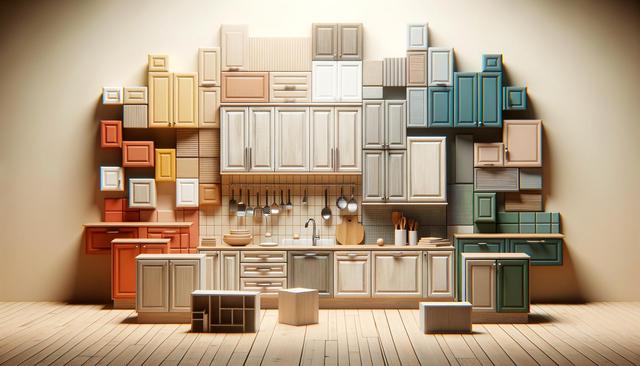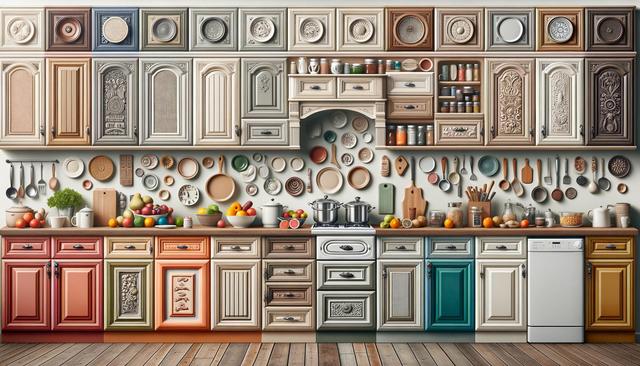Popular Kitchen Cabinet Colour Trends
When planning a kitchen renovation or upgrade, the cabinet colour is one of the most impactful design decisions you’ll make. In recent years, a variety of colour trends have emerged that cater to both traditional and modern styles. Neutral tones remain a staple, with shades like white, grey, and beige offering timeless elegance and versatility. These colours work well in both small and large kitchens and can easily be paired with different countertop and backsplash materials.
For those looking to make a bold statement, darker hues such as navy blue, forest green, and charcoal are increasingly popular. These colours add a touch of sophistication and depth, especially when balanced with lighter walls and flooring. On the other hand, soft pastels and muted earth tones are gaining traction for those who prefer a more relaxed and inviting atmosphere in their kitchen.
Here are a few colour categories to consider:
- Classic white and off-white for a clean, bright look
- Cool greys and blues for a modern touch
- Deep greens and blacks for dramatic flair
- Warm wood tones for a natural, rustic feel
Choosing the right colour is not just about aesthetics—it can also influence lighting, space perception, and the overall mood of your kitchen.
Understanding Kitchen Cabinet Prices
Kitchen cabinet prices can vary significantly depending on materials, construction type, and finishes. Generally, there are three categories of cabinets to consider: stock, semi-custom, and custom. Stock cabinets are mass-produced and come in standard sizes and finishes, making them the most affordable option. Semi-custom cabinets offer more flexibility in terms of design and materials, while custom cabinets are built to order and tailored to your specific requirements.
Here’s a general breakdown of cost ranges:
- Stock cabinets: $60 to $200 per linear foot
- Semi-custom cabinets: $100 to $650 per linear foot
- Custom cabinets: $500 to $1,200+ per linear foot
Other factors that impact pricing include the type of wood or material used, hardware choices, and the complexity of the design. For example, cabinets made from solid hardwood tend to be more expensive than those made from particleboard or MDF. Additionally, premium finishes and soft-close mechanisms can add to the overall cost.
It’s a good idea to request multiple quotes and compare product specifications before making a final decision. This ensures you get a balance of quality and value within your budget.
Comparing Cabinet Materials and Finishes
The material used in kitchen cabinets plays a crucial role in their durability, appearance, and maintenance. Common materials include solid wood, plywood, MDF (medium-density fiberboard), and particleboard. Solid wood is often chosen for its natural beauty and strength, though it comes at a higher cost. Plywood is a reliable alternative known for its stability and resistance to moisture, making it a practical choice for kitchen environments.
MDF and particleboard are more budget-friendly and can be finished to mimic higher-end materials. However, they may not hold up as well under heavy use or in areas with high humidity. Finishes also impact the look and lifespan of cabinets. Popular options include:
- Lacquered finishes for a sleek, modern look
- Painted finishes in various colours for customization
- Stained wood finishes that highlight natural grain
- Laminate and thermofoil for easy maintenance and affordability
Each finish has its pros and cons, so it’s important to consider your lifestyle and cleaning habits when selecting one. For example, high-gloss finishes show fingerprints more easily but are simple to wipe clean, while matte finishes offer a more subtle appearance and can hide minor imperfections better.
Choosing a Reliable Kitchen Cabinet Supplier
Finding a reputable supplier is key to ensuring you receive quality kitchen cabinets that meet your expectations. While specific brand names can’t be mentioned, there are several characteristics to look for when evaluating a cabinet supplier. Start by researching companies with strong customer feedback and a proven track record of delivering on time and within budget.
Key things to check include:
- Range of options in colours, materials, and styles
- Clear warranty and return policies
- Transparent pricing and itemized quotes
- Installation services or recommendations
Additionally, visiting a showroom can provide a better sense of the product quality and help you visualize how different colours and finishes will look in your kitchen. If shopping online, make sure the supplier offers detailed product descriptions and high-resolution images to aid in your decision-making.
Customer support is another important aspect. Choose a supplier that is responsive to inquiries and willing to provide guidance throughout the selection process. This not only ensures a smoother experience but also helps you avoid costly mistakes or delays.
Tips for Selecting the Right Cabinet Style
Beyond colours and materials, the style of your kitchen cabinets plays a significant role in the overall design of your space. Cabinet styles range from classic to contemporary, with many variations in between. Shaker-style cabinets, characterized by their simple, clean lines, are among the most popular choices due to their versatility and timeless appeal. For a more traditional look, raised panel cabinets offer intricate detailing and a sense of formality.
Modern kitchens often feature flat-panel cabinets with minimal hardware, creating a sleek and uncluttered appearance. Glass-front cabinets can be used sparingly to showcase dishware or add visual interest. When choosing a style, consider:
- How it complements your kitchen layout and size
- Your personal taste and lifestyle needs
- Maintenance and cleaning requirements
- Compatibility with existing elements like countertops and flooring
Mixing cabinet styles or colours is also a growing trend. For example, using darker cabinets on the lower half and lighter ones above can create depth and visual balance. Ultimately, the right style should reflect your personality while being functional and easy to maintain.
Conclusion: Making Informed Choices for Your Kitchen Cabinets
Choosing kitchen cabinets involves more than just picking a colour—it’s about balancing style, durability, budget, and functionality. By understanding the range of colours available, evaluating material and finish options, and comparing price points, you can make confident decisions that enhance your kitchen space. Whether you prefer a classic or modern look, taking the time to research and plan will ensure your kitchen cabinets meet both your aesthetic and practical needs. Investing in quality cabinets from a reliable supplier can make a lasting difference in the overall appeal and performance of your kitchen.


